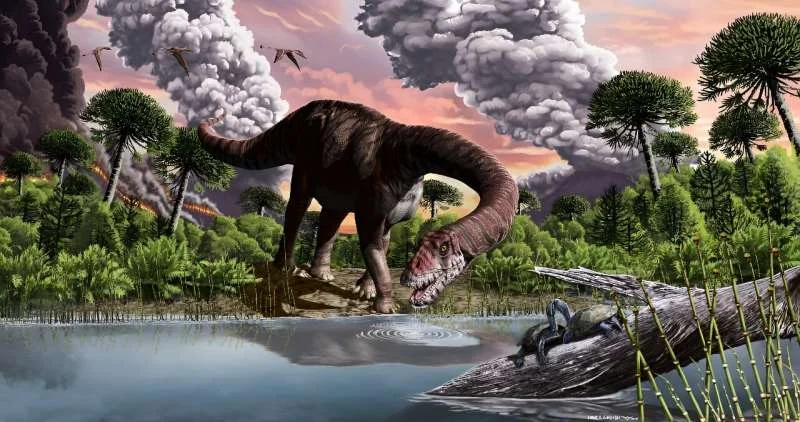Dinosaur research challenges Bergman’s rule
- April 9, 2024
- 0
A group of American and British researchers decided to test whether Bergman’s rule works depending on body size and latitude in the example of dinosaurs and Mesozoic mammals.
A group of American and British researchers decided to test whether Bergman’s rule works depending on body size and latitude in the example of dinosaurs and Mesozoic mammals.

A group of American and British researchers decided to test whether Bergman’s rule works depending on body size and latitude in the example of dinosaurs and Mesozoic mammals. To complete the picture, the authors also studied modern birds and animals.
In the mid-19th century, German biologist Karl Bergman formulated a rule concluding that warm-blooded animals living in cold climates are generally larger than their relatives living in warm latitudes. Undoubtedly, climate strongly influences the functioning of ecosystems, but there is still no scientific consensus on the accuracy of Bergman’s rule. It was first applied to mammals, but later efforts were made to extend it to birds, amphibians, and even fish.
Verifying Bergman’s rule is complicated by several factors. In a large animal sample inevitably smaller subgroups arise, each of which may have its own growth trend. Further investigation of the latitudinal dependence of body size requires a broad evolutionary model and there is a lack of comparative data across modern ecosystems.
This time they decided to study Bergman’s rule on the example of animals of the Mesozoic era. A team of American and British geologists and biologists examined 62 Mesozoic mammal species and 339 dinosaurs, including fossils from the high latitudes of the Cretaceous Prince Creek Formation in Alaska. This is the northern region of dinosaurs. Naked Science He described how evidence of hibernation of ancient predators was discovered there.
A group of researchers evaluated the impact of cool climate on body size in the Mesozoic and compared the resulting patterns with data on modern mammals and birds. The results of the scientific study are published in the journal. Nature Communication.
The Mesozoic era as a whole was characterized by a warm atmosphere at almost all latitudes, but the Prince Creek region was still cool – 6.3 ± 2.2 degrees Celsius (which is only slightly warmer than modern Moscow) and a polar night of about 120 days. However, it is worth mentioning that the Mesozoic climate changed during the Triassic, Jurassic and Cretaceous periods, then it cooled and the poles were covered with ice sheets. The authors of the new study examined fossil femur rings and compiled paleoclimatic models to assess the animal body’s response to the climate regime.
The scientists noted that the final model found no correlation between dinosaur size and latitude; This finding was also old for Mesozoic mammal forms. Analysis of modern animals (5,496 species of birds and 2,305 species of land mammals) also showed no clear relationship between climate and body size.
The authors of the paper were able to notice a small effect for some extinct mammals and birds: a one-degree Celsius increase in temperature reduced body weight by 0.6% in the former, and a one-degree decrease in temperature increased body weight by 0.8. % in the next one, another one, the next one. But this effect explains only a small part of the size change, the scientists added.
“Our study showed that the evolution of different body sizes in dinosaurs and mammals cannot be reduced to a simple dependence on latitude or temperature. We found that Bergman’s rule applies only to a subset of homothermic animals (those that maintain a constant body temperature) and when only temperature is taken into account, ignoring the rest of the climate variables . This shows that Bergman’s rule is actually more the exception than the rule,” said Lauren N. Wilson, author of the paper.
Source: Port Altele
As an experienced journalist and author, Mary has been reporting on the latest news and trends for over 5 years. With a passion for uncovering the stories behind the headlines, Mary has earned a reputation as a trusted voice in the world of journalism. Her writing style is insightful, engaging and thought-provoking, as she takes a deep dive into the most pressing issues of our time.